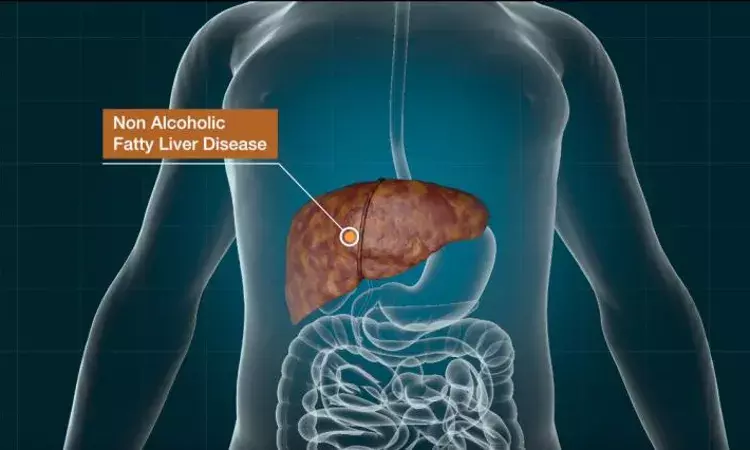- Home
- Medical news & Guidelines
- Anesthesiology
- Cardiology and CTVS
- Critical Care
- Dentistry
- Dermatology
- Diabetes and Endocrinology
- ENT
- Gastroenterology
- Medicine
- Nephrology
- Neurology
- Obstretics-Gynaecology
- Oncology
- Ophthalmology
- Orthopaedics
- Pediatrics-Neonatology
- Psychiatry
- Pulmonology
- Radiology
- Surgery
- Urology
- Laboratory Medicine
- Diet
- Nursing
- Paramedical
- Physiotherapy
- Health news
- Fact Check
- Bone Health Fact Check
- Brain Health Fact Check
- Cancer Related Fact Check
- Child Care Fact Check
- Dental and oral health fact check
- Diabetes and metabolic health fact check
- Diet and Nutrition Fact Check
- Eye and ENT Care Fact Check
- Fitness fact check
- Gut health fact check
- Heart health fact check
- Kidney health fact check
- Medical education fact check
- Men's health fact check
- Respiratory fact check
- Skin and hair care fact check
- Vaccine and Immunization fact check
- Women's health fact check
- AYUSH
- State News
- Andaman and Nicobar Islands
- Andhra Pradesh
- Arunachal Pradesh
- Assam
- Bihar
- Chandigarh
- Chattisgarh
- Dadra and Nagar Haveli
- Daman and Diu
- Delhi
- Goa
- Gujarat
- Haryana
- Himachal Pradesh
- Jammu & Kashmir
- Jharkhand
- Karnataka
- Kerala
- Ladakh
- Lakshadweep
- Madhya Pradesh
- Maharashtra
- Manipur
- Meghalaya
- Mizoram
- Nagaland
- Odisha
- Puducherry
- Punjab
- Rajasthan
- Sikkim
- Tamil Nadu
- Telangana
- Tripura
- Uttar Pradesh
- Uttrakhand
- West Bengal
- Medical Education
- Industry
New non-invasive imaging method may monitor progression of NAFLD
 NONALCOHOLIC FATTY LIVER DISEASE (NAFLD) OFTEN LEADS TO VARIOUS LIVER COMPLICATIONS, BUT THERE IS A LACK OF DRUGS FOR THE TREATMENT OF NAFLD. view more CREDIT: GWANGJU INSTITUTE OF SCIENCE AND TECHNOLOGY
NONALCOHOLIC FATTY LIVER DISEASE (NAFLD) OFTEN LEADS TO VARIOUS LIVER COMPLICATIONS, BUT THERE IS A LACK OF DRUGS FOR THE TREATMENT OF NAFLD. view more CREDIT: GWANGJU INSTITUTE OF SCIENCE AND TECHNOLOGYMonitoring the progression of non-alcoholic fatty liver disease is hindered by a lack of suitable non-invasive imaging methods.
Researchers at Massachusetts General Hospital (MGH) and the Massachusetts Institute of Technology (MIT) have recently developed a non-invasive imaging method that has promising clinical potential to screen and monitor certain chronic liver diseases.
The technique called autofluorescence imaging has been described in a study published in Nature Biomedical Engineering.
Fat accumulation in the liver—called non-alcoholic fatty liver disease (NAFLD)—is a leading cause of chronic liver disease. "In Western societies, NAFLD's prevalence is increasing in parallel with rising rates of obesity, and the condition is expected to affect nearly one in two adults in the United States by 2030," said co–senior author Rakesh K. Jain, Ph.D., the Director of the E.L. Steele Laboratories for Tumor Biology at MGH and the Andrew Werk Cook Professor of Radiation Oncology at Harvard Medical School.
Usually diagnosis of chronic liver disease encompasses the removal of liver tissue through a biopsy procedure to accurately assess liver inflammation and fibrosis (i.e. tissue scarring), which are caused by oxidative stress and several other destructive processes.
It's known that oxidative stress can lead to the production of lipofuscin, a "wear-and-tear" pigment in the liver among other organs and cells. Dr. Jain and co–senior author Moungi Bawendi, Ph.D., the Lester Wolfe Professor of Chemistry at MIT, wondered whether visualizing this pigment through a technique called autofluorescence imaging might help to detect early and late stages of liver disease, NAFLD in particular.
Using near-infrared and shortwave infrared technologies developed by the Bawendi laboratory in combination with animal models widely used in the Jain laboratory to mimic NAFLD, these teams were able to pinpoint areas of liver injury, with clear discrimination between diseased and normal tissues.
Detecting lipofuscin in this way also allowed the scientists to non-invasively monitor the progression and regression of liver inflammation and scarring in mouse models of NAFLD, without the need to obtain liver tissue through biopsies.
Also, in biopsied samples of human liver tissue, the imaging modalities could distinguish more severe cases of NAFLD from milder cases.
"Preclinically, these methods can be used in animal studies to prevent the need for sacrificing animals at multiple time points. And with further investigations, we hope this research can be translated into the clinic for diagnosing and monitoring chronic liver disease noninvasively," said Dr. Jain.
"Furthermore, this research opens up the potential of non-invasive autofluorescence imaging of lipofuscin in diseases that affect other organs."
More information: Mari Saif et al. Non-invasive monitoring of chronic liver disease via near-infrared and shortwave-infrared imaging of endogenous lipofuscin, Nature Biomedical Engineering (2020).
Dr Kamal Kant Kohli-MBBS, DTCD- a chest specialist with more than 30 years of practice and a flair for writing clinical articles, Dr Kamal Kant Kohli joined Medical Dialogues as a Chief Editor of Medical News. Besides writing articles, as an editor, he proofreads and verifies all the medical content published on Medical Dialogues including those coming from journals, studies,medical conferences,guidelines etc. Email: drkohli@medicaldialogues.in. Contact no. 011-43720751


